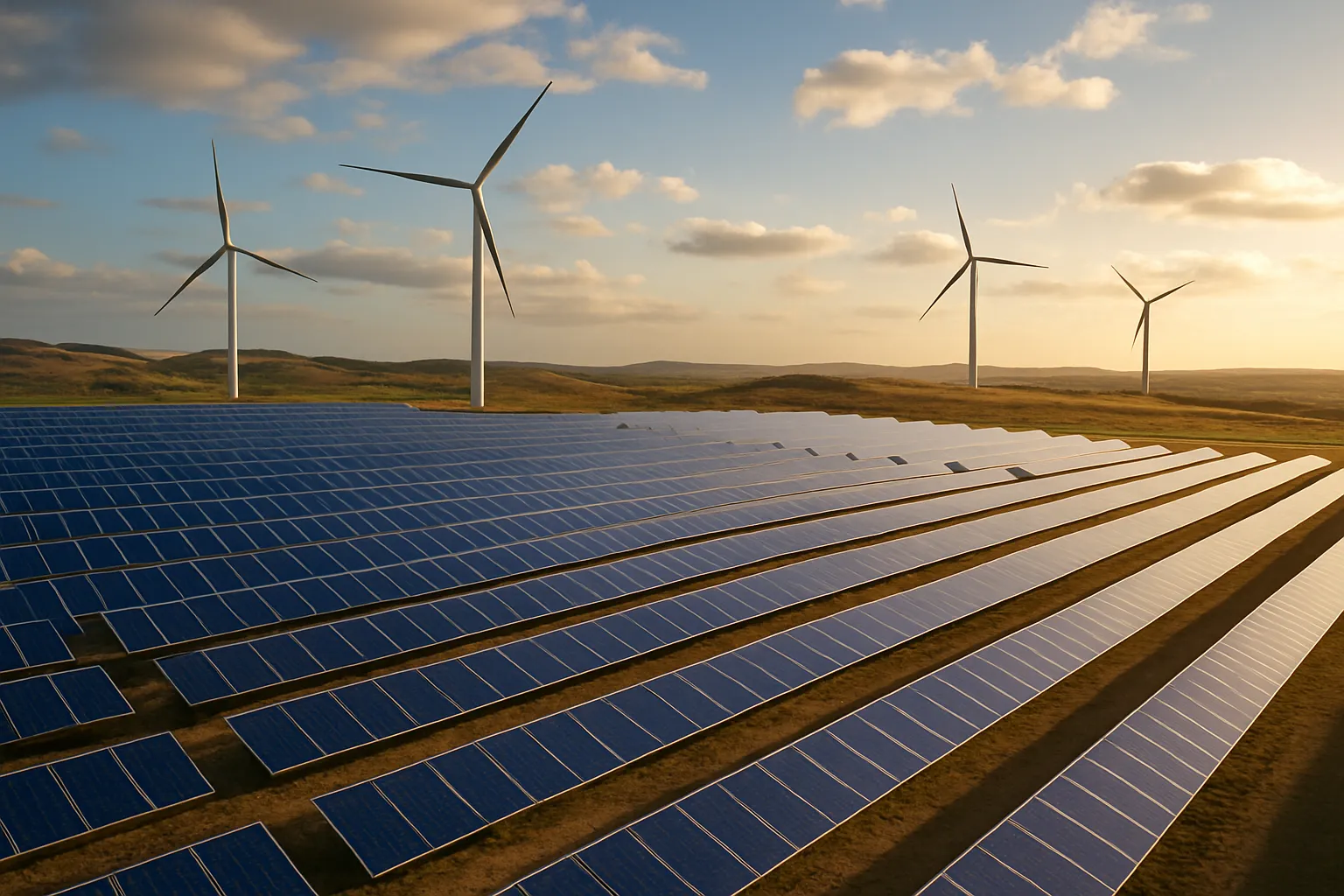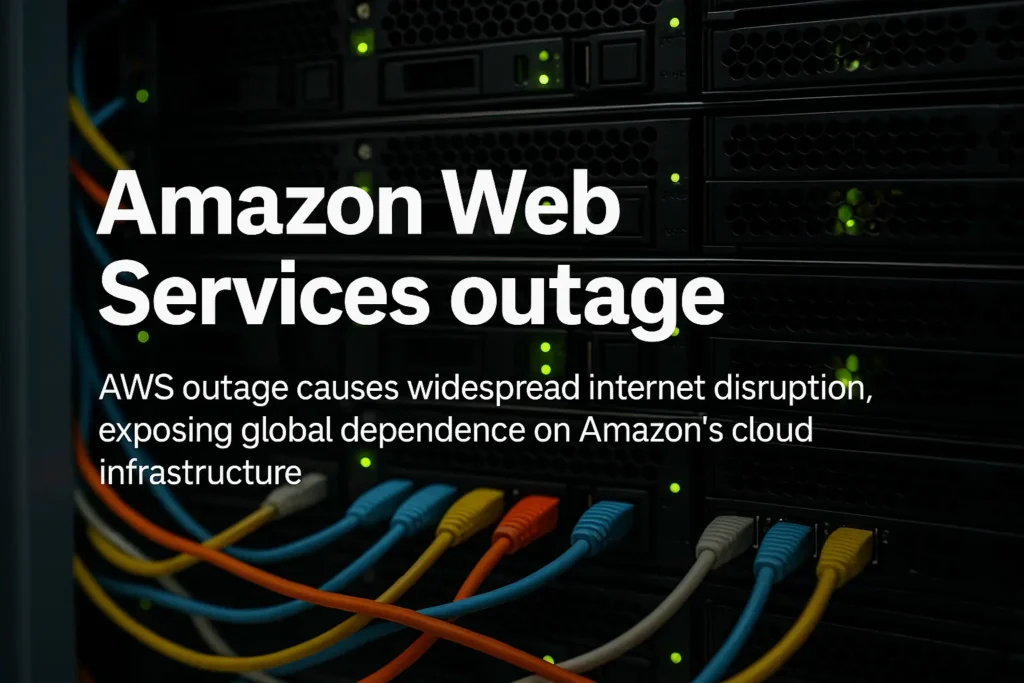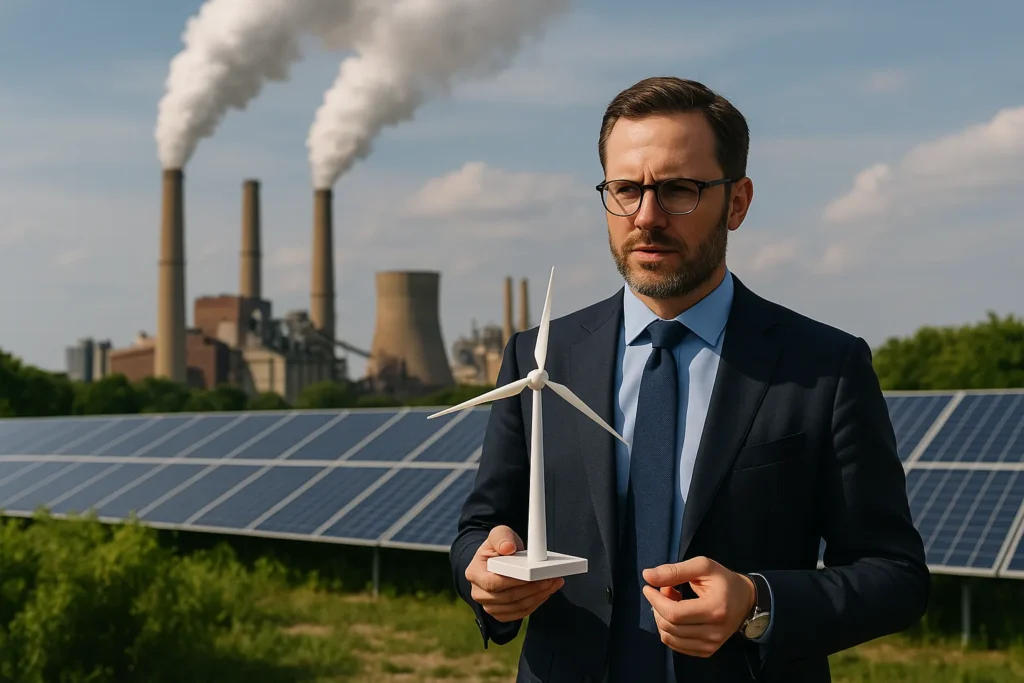Introduction
Global solar and wind capacity is surging at record speed, even as the United States — once the face of clean innovation — slashes its own green energy incentives. This divergence has redrawn the global map of energy leadership. While Trump’s administration dismantles subsidies and freezes new federal grants, India, the Middle East, and parts of Africa are racing ahead. The data doesn’t lie: the renewable transition no longer depends on Washington. It’s now a global movement reshaping power — literally and politically.
Context: The Mainstream Narrative
The mainstream narrative still clings to the myth that the United States dictates the pace of the global energy transition. Analysts in New York and Washington argue that cutting domestic subsidies will slow the green shift worldwide. But the numbers from the International Energy Agency tell a different story: 2025 saw a record 560 gigawatts of renewable power added globally — more than double the previous record.
Solar capacity grew by 32% in India alone, while Middle Eastern economies, once synonymous with oil, are pivoting fast — Saudi Arabia’s NEOM project already exports solar electricity across borders. In Africa, nations like Morocco and Kenya are building some of the world’s largest wind corridors.
Oppositional Argument: Why the Mainstream Is Wrong
The mainstream media frames the U.S. rollback as a global setback. But this is analytical laziness. The world’s clean energy expansion has decoupled from American leadership. In fact, Washington’s withdrawal has accelerated diversification. Countries once dependent on U.S. tech and capital now build local ecosystems.
Europe, stung by energy insecurity during the Russian war, doubled its investments in solar manufacturing. China, vilified in Western rhetoric, dominates 80% of global panel production. India’s Adani Green and Reliance Industries are exporting entire photovoltaic modules. Trump’s cuts haven’t halted progress — they’ve exposed America’s shrinking influence.
Analytical Breakdown: The Data Behind the Shift
Look at the economics. In 2025, solar power averaged $0.018 per kilowatt-hour in India — cheaper than any fossil fuel in history. Wind fell below $0.02 in northern Africa. These aren’t pilot projects; they’re industrial-scale revolutions.
The global share of renewables in new power capacity crossed 75%, leaving fossil fuels with a dwindling quarter. Even conservative oil economies are hedging bets: the UAE, once a symbol of oil excess, now hosts the world’s largest single-site solar park.
Meanwhile, U.S. renewable capacity additions dropped 18% year-on-year, as Trump’s Department of Energy canceled loan guarantees and repealed production credits. But private capital didn’t stop flowing — it simply moved offshore. Investors from BlackRock to TotalEnergies are redirecting funds to Asia and Africa, following both profit and momentum.
Counterarguments
Critics argue that the U.S. pullback is temporary, that new incentives will reappear once markets stabilize. Yet history says otherwise. Once global supply chains relocate, they rarely return. American manufacturers who abandoned solar production a decade ago never regained competitiveness. Tesla’s Solar Roof remains niche; China’s Longi Solar sells panels for half the cost. The “America First” strategy is now America Last in renewable technology.
Human Perspective: The Ground Reality
In Rajasthan, thousands of local workers now install panels under the scorching sun — part of a $10 billion domestic solar corridor that powers rural villages once left in the dark. In Morocco’s Ouarzazate complex, women engineers supervise wind farm operations that supply power to Spain and beyond.
Contrast that with Ohio, where wind projects have stalled under federal red tape and community backlash fueled by partisan media. The narrative of “protecting jobs” hides the truth: clean energy creates them — just not in the same places politicians want votes.
The global solar and wind capacity boom is not abstract policy. It’s millions of livelihoods, reshaping how developing nations leapfrog the fossil age.
Analytical Comparison: The Geopolitical Divide
There’s a deeper undercurrent — a geopolitical one. America’s retreat is not just economic but ideological. The global South views Washington’s reversal as moral hypocrisy. How can the U.S. preach climate leadership while subsidizing oil drilling in Alaska?
Meanwhile, India’s Prime Minister Narendra Modi proudly showcases renewable exports as a form of “energy independence diplomacy.” The Gulf monarchies are reinventing themselves as clean energy empires. China, criticized for its emissions, quietly dominates every layer of the value chain — from polysilicon to offshore turbines.
By contrast, U.S. fossil fuel lobbyists regained their grip, influencing Trump’s “Energy Freedom Act,” which redirected federal loans toward natural gas and coal. The irony: America’s deregulation has made it a follower in a race it once led.
The Insider View: Industry Whispers and Policy Contradictions
Behind closed doors, even U.S. energy executives admit that Trump’s rollback will hurt competitiveness. Leaked memos from the Department of Energy in May revealed internal dissent — career officials warning that repealing tax credits “will trigger a 60% decline in domestic solar jobs by 2026.”
At the same time, foreign companies are exploiting the vacuum. Siemens Energy is expanding in Egypt; India’s JSW Energy is bidding on U.S. contracts through shell partners in Canada. The market doesn’t wait for politics. It evolves where momentum lives.
Counterarguments
Trump’s allies claim the policy shift restores “energy sovereignty.” But sovereignty without innovation is regression. U.S. firms now depend on imported Chinese components, a dependency that contradicts the administration’s own nationalist agenda.
Conclusion: America’s Shrinking Seat in the Energy Future
Global solar and wind capacity has surged past symbolic milestones. What once looked like climate ambition has become economic realignment. The world no longer waits for the U.S. — and the longer Washington resists, the further it drifts from the energy frontier.
Trump’s cuts may win applause from oil lobbies, but the rest of the world is moving on — faster, cheaper, and smarter. The irony is brutal: America, the land that invented Silicon Valley, is now importing clean energy solutions it once pioneered.
The clean revolution is no longer led from Washington. It’s led from New Delhi, Riyadh, and Nairobi.
External Links
- International Energy Agency: Renewables 2025 Outlook
- Financial Times coverage on clean energy investment trends
43 views






